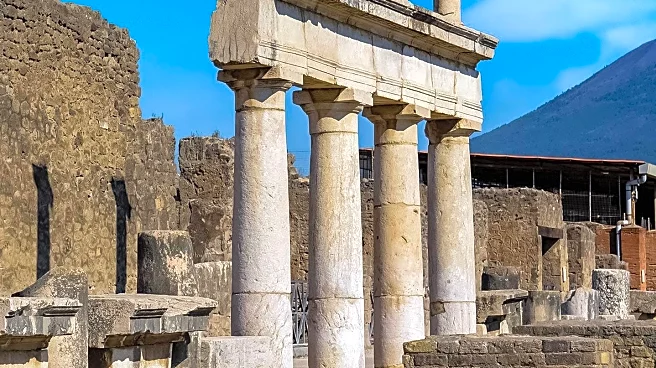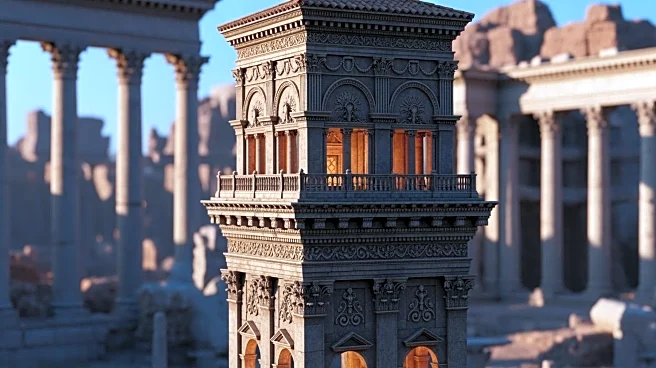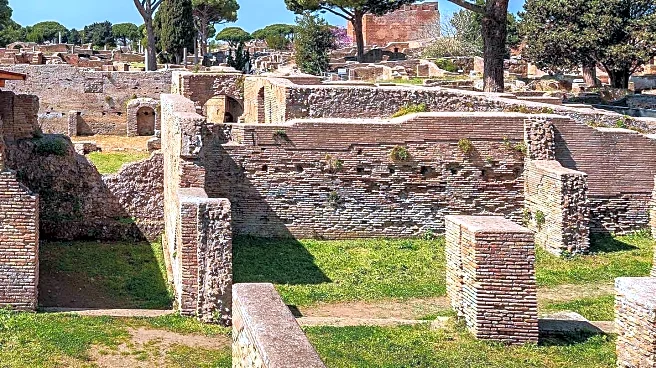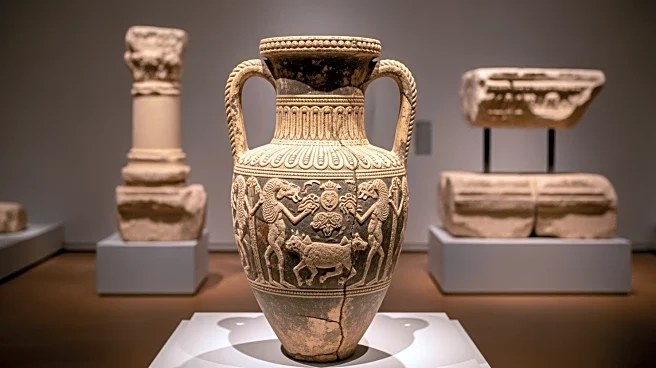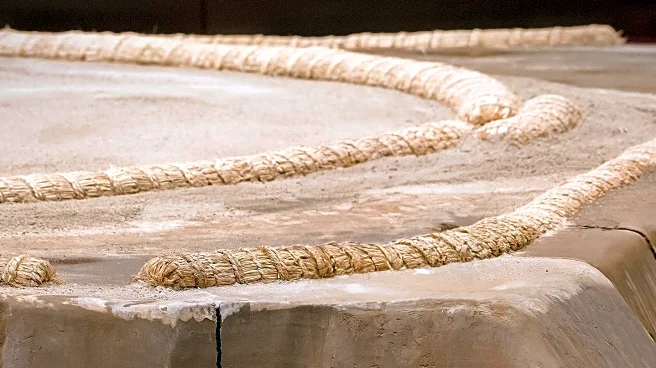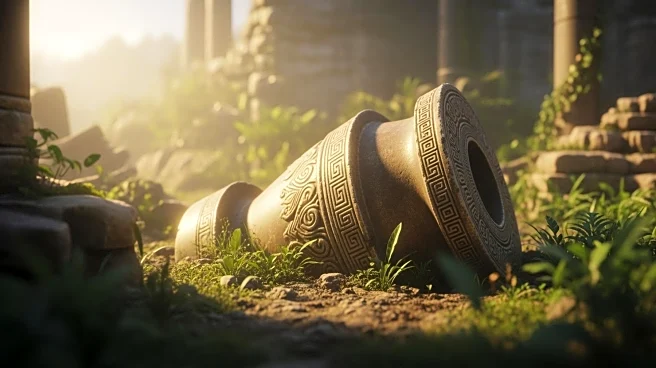What's Happening?
A new study suggests that the ancient city of Pompeii was once dominated by grand towers, which were symbols of wealth and power among the elite. This discovery is part of the Pompeii Reset project, which uses
advanced technology to create 3D reconstructions of buildings lost during the eruption of Mount Vesuvius in 79 AD. The study focuses on the House of Thiasus, revealing a 12-meter-high tower with panoramic views, suggesting that upper floors were more than just cheap rentals or slave quarters. The findings challenge previous assumptions about the use of upper floors in ancient Pompeii.
Why It's Important?
The study provides new insights into the social and architectural dynamics of ancient Pompeii, highlighting the sophistication and wealth of its inhabitants. By reconstructing these towers, researchers can better understand the daily lives and social structures of the time. This research not only enriches historical knowledge but also enhances the cultural value of Pompeii as a heritage site. The findings may influence future archaeological approaches, encouraging a reevaluation of upper floors in ancient structures.
Beyond the Headlines
The study's use of 3D technology represents a significant advancement in archaeological research, allowing for more accurate reconstructions of ancient sites. This approach could be applied to other historical sites, offering a deeper understanding of ancient civilizations. Additionally, the findings may inspire further exploration of how architecture reflected social hierarchies in ancient societies, providing a broader context for historical studies.
